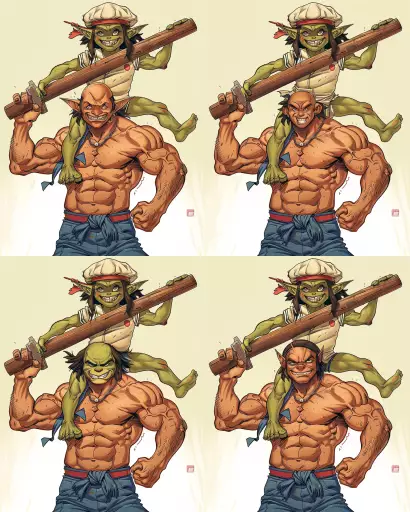Explore the Best AI Image Gallery

Beyond the Brush: How AI Image Creation Tools are Reshaping Creativity
The realm of art has always been a canvas for human imagination, where creativity flows through paintbrushes, sculpting tools, and musical instruments. But today, a new force is emerging, one that blurs the lines between human ingenuity and artificial intelligence: AI image creation tools. These powerful algorithms are capable of generating stunning visuals, from photorealistic landscapes to abstract masterpieces, opening up a world of possibilities for artists, designers, and anyone with a creative spark.
The Rise of the Machines: Unlocking Creative Potential
AI image creation tools operate by learning from vast datasets of images, identifying patterns and structures that define visual aesthetics. Users can provide text prompts, concepts, or even rough sketches, and the AI will translate these inputs into unique and compelling visuals. This opens up a realm of possibilities for:
- Concept Visualization: Designers and artists can quickly generate multiple variations of an idea, exploring different styles and compositions before committing to a final design.
- Personalized Content Creation: Imagine generating custom artwork based on your favorite characters, landscapes, or even your own portrait in a unique style. AI tools empower individuals to become creators of their own visual narratives.
- Storytelling and Game Development: Imagine bringing fantastical worlds to life with AI-generated environments, characters, and objects, enriching storytelling experiences in games and interactive media.
Ethical Considerations: Navigating the Uncharted Waters
While the potential of AI image creation tools is immense, its crucial to acknowledge the ethical considerations that accompany this technology. Some key concerns include:
- Copyright and Ownership: Who owns the copyright to an image generated by an AI? Is it the user who provided the prompt, the developer of the AI tool, or the AI itself?
- Bias and Representation: AI algorithms learn from existing data, which can perpetuate biases present in society. This raises concerns about the representation of diverse cultures, ethnicities, and genders in AI-generated imagery.
- Job Displacement: Will AI image creation tools replace human artists and designers? While automation may streamline certain tasks, its unlikely to fully supplant human creativity and ingenuity.
The Future Landscape: Collaboration and Evolution
Looking ahead, the future of AI image creation tools is likely to be one of continuous evolution and collaboration. We can expect:
- Increased User Control: Tools will empower users with greater control over the creative process, allowing for finer-grained customization and more personalized outputs.
- Hybrid Approaches: Human creativity and AI capabilities will likely converge, with artists using AI tools as a powerful extension of their own skills, rather than a replacement.
- New Artistic Expressions: AI image creation will undoubtedly give rise to entirely new artistic styles and genres, pushing the boundaries of whats possible in visual art.
Conclusion
AI image creation tools are poised to revolutionize the creative industry, empowering individuals and professionals alike. By embracing these tools responsibly and fostering a culture of ethical innovation, we can unlock the full potential of AI to enhance creativity, expression, and artistic exploration.